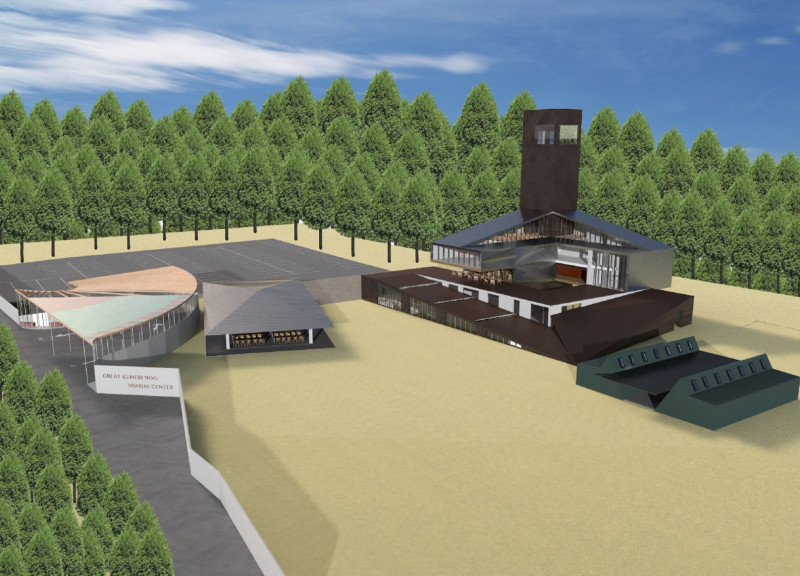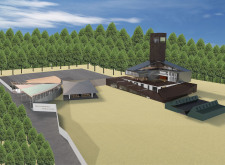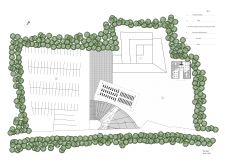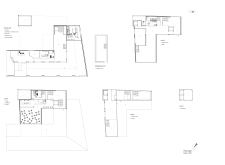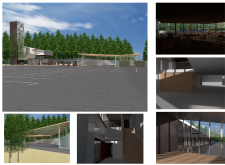5 key facts about this project
The Great Kemeri Bog Visitor Center is set within the lush surroundings of Great Kemeri National Park. The building serves as a meeting point for visitors, providing essential information and services while connecting them with the rich ecosystems of the area. The design focuses on blending the architecture with its natural environment, highlighting the importance of coexistence between built structures and the landscape.
Site Plan
The site plan is thoughtfully arranged to facilitate visitor movement and interaction. At its center is the Visitor Center, which functions as a key location for information and services. Surrounding this main building are additional amenities, including a spa, outdoor kitchen area with seating, and a playground. Each of these features encourages social engagement in a setting that celebrates nature. The car park is placed carefully to allow easy access while reducing impact on the delicate ecological balance of the site.
Ground Level Functionality
On the ground level, important functional spaces include the entrance, information center and ticket sales, staff area, exhibition room, and sculpture garden. This layout not only streamlines traffic flow but also enhances the overall visitor experience, providing various opportunities for learning and enjoyment. The exhibition room plays a vital role, serving as a space for educating guests about local ecology and promoting conservation efforts.
Vertical Circulation and Spaces
The building spans several levels, each designed for specific visitor needs. Level 2 presents a lobby, coffee bar, and terrace, which provide spaces for relaxation and socializing. An underground exhibition room enhances educational possibilities, offering immersive experiences that engage visitors more fully with the area's natural environment.
Unique Features
Levels 3 and 4 house additional exhibition rooms and a studio, allowing for creative expression and ongoing interaction with the space. A notable aspect is the observatory on Level 5, which gives visitors the chance to observe the unique plants and animals of the bog. The overall design effectively demonstrates how architecture can enrich educational experiences while remaining sensitive to the ecological context of the area.


